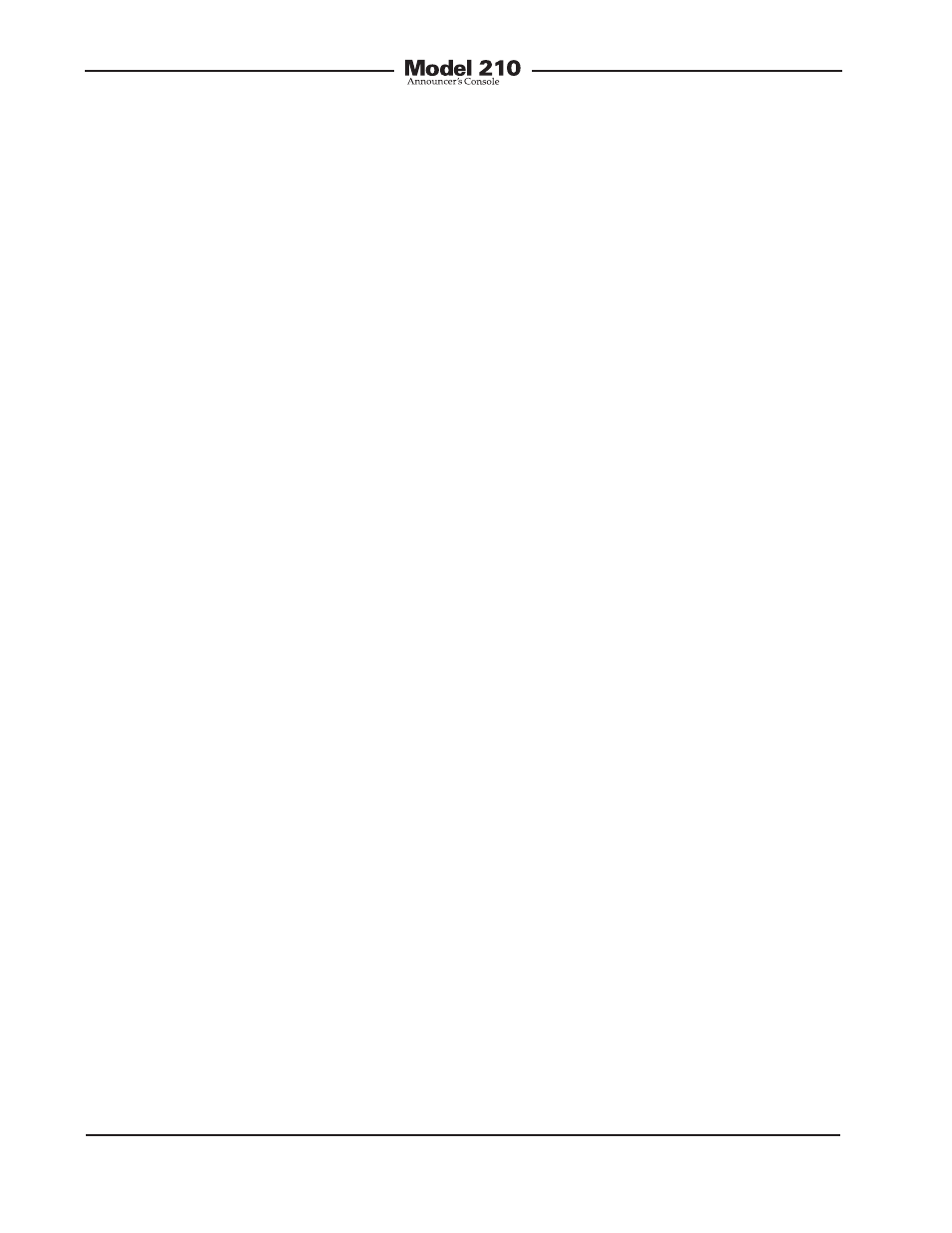Ifb input – Studio Technologies 210 2008 User Manual
Page 12

Issue 4, October 2008
Model 210 User Guide
Page 12
Studio Technologies, Inc.
to the talkback output can range from
amplified loudspeakers to analog inputs
on intercom systems, and input channels
associated with audio consoles. Connect-
ing the talkback output to devices that
allow easy control of the signal level can
be helpful. For example, connecting to a
spare input module on an audio console
provides the flexibility to add gain or
attenuate as required. A talkback-
associated output connection on the
audio console can then connect to the
final destination(s).
As previously mentioned, the talkback
outputs on multiple Model 210 units can
be directly connected together. Using
a simple “Y” or “W” cable, this passive
summing (adding together) of talkback
signals allows one audio cable to serve
as a master talkback path. A side effect
from using this passive summing tech-
nique is that signal attenuation will
occur. The audio quality won’t suffer, but
an audio “pad” is created. If two talkback
outputs are connected together, a signal
attenuation of 6 dB can be expected. Con-
necting three talkback outputs together
will result in 9.5 dB of attenuation. And
four talkback outputs “multed” together
will lead to 12 dB of attenuation. In most
cases this attenuation won’t pose a prob-
lem. Typically a device that receives the
talkback signal, such as an amplified
loudspeaker, will have an adjustable input
sensitivity.
IFB Input
The Model 210’s IFB input is designed
to directly connect with “wet” (DC-biased)
IFB circuits. These circuits provide DC
power and one or two channels of audio
over a standard 3-conductor microphone-
style cable. Typically, the IFB circuit’s
interface connector is a 3-pin male
XLR-type wired so that common is on pin 1,
DC with channel 1 audio is on pin 2, and
channel 2 audio is on pin 3. Some IFB
circuits may only have one audio channel.
In this case, audio will generally be on pin 3
with pin 2 providing only DC power.
The power supplied by an IFB circuit,
normally in the range of 28 to 32 volts DC,
is usually sufficient to operate the Model
210’s circuitry. The acceptable input range
is 24 to 32 volts, with a required current of
105 milliamperes. Note that the specified
input voltage is given when measured di-
rectly at the Model 210’s IFB input connec-
tor, not at the source of the IFB circuit. The
one or two audio signals provided by the
IFB circuit can serve as the audio sources
for the headphone outputs.
In North American field and in-studio
broadcast applications it is common to find
RTS 4000-series IFB equipment being used
to provide the IFB circuits. The Model 210
can be directly connected to, and function
correctly with, one of these circuits. For
reliable operation, especially when using
lengthy cable runs, it’s strong-ly recom-
mended that no other device be connected
to a 4000-series IFB circuit that is speci-
fied for connection to a Model 210. This
requirement is due to the current-limited
DC source that is supplied by the 4010 IFB
Controller.
With 4000-series IFB circuits channel 1
(XLR pin 2) provides program audio that is
“interrupted” with cue signals. This channel
is sometimes referred to as “program-with-
interrupt.” It’s important to note that the
program audio source fully mutes whenev-
er directors or producers are communicat-
ing with on-air talent. Channel 2 (XLR pin 3)
of the IFB circuit provides a “program-only”
audio feed. It is never interrupted with cue
signals.
